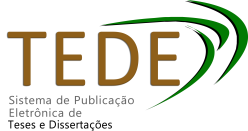| ???jsp.display-item.social.title??? |


|
Please use this identifier to cite or link to this item:
http://localhost:8080/tede/handle/tede/190| ???metadata.dc.type???: | Tese |
| Title: | ON THE COSMIC ACCELERATION AND MATTER CLUSTERING IN MODIFIED f(R) GRAVITY MODELS |
| ???metadata.dc.creator???: | NOGUEIRA RIBEIRO, BRUNO WESLEY |
| ???metadata.dc.contributor.advisor1???: | BARTOLOME BERNUI LEO, ARMANDO |
| ???metadata.dc.description.resumo???: | Titulo da tese em portugues: Sobre a aceleração cósmica e a aglomeração de matéria em modelos de gravidade modificada f(R) Entender a origem da atual expansão acelerada do universo é um dos maiores desafios da cosmologia moderna e da física de partículas. No contexto do modelo padrão da cosmologia, o modelo $\Lambda$CDM, essa aceleração é atribuída à constante cosmológica $\Lambda$, ou, equivalentemente, à densidade de energia do vácuo quântico, que é reconhecida como a forma mais simples de energia escura. Acontece que, seja por meio de uma constante cosmológica ou de formas mais gerais de energia escura, essa explicação para a origem da aceleração cósmica recente apresenta algumas inconsistências internas. Por um lado, dentro da visão padrão da cosmologia, dois problemas envolvendo a constante cosmológica preocupam tanto os físicos de partículas quanto os cosmólogos: ($i$) a densidade de energia do vácuo medida através de observações cosmológicas é surpreendentemente menor do que a estimada pela teoria quântica de campos (até 120 ordens de magnitude, dependendo da teoria utilizada); e ($ii$) as densidades normalizadas de energia do vácuo e da matéria possuem valores curiosamente próximos hoje, o que parece ser uma coincidência cósmica. Por outro lado, deveria ser possível observar a energia escura diretamente, uma vez que ela corresponde a aproximadamente $70\%$ da densidade total de energia do universo, de acordo com observações atuais. No entanto, nenhuma energia escura foi observada diretamente a nível fundamental (na física de partículas) até o momento. Todas as evidências de uma componente energética que exerce pressão negativa sobre o universo vêm de observações cosmológicas indiretas. A fim de evitar os problemas inerentes à constante cosmológica, ou a formas mais gerais de energia escura, alguns cenários alternativos baseados em uma modificação adequada da Relatividade Geral, a teoria atual da gravidade, foram propostos. Este é o caso das teorias de gravidade $f(R)$, que generalizam a gravitação substituindo o termo $R - 2\Lambda$ na Lagrangiana de Einstein-Hilbert por uma função geral do escalar de Ricci, $R$. Sabe-se que essas teorias explicam adequadamente a aceleração cósmica como um efeito da geometria do espaço-tempo, em vez de uma forma exótica de energia escura. Elas também são conformemente equivalentes à teoria de Einstein com a adição de um grau de liberdade extra no setor gravitacional, o scalaron, um campo escalar canônico cujo potencial é unicamente determinado pela curvatura escalar de Ricci, $R$. Nesta tese, estudamos a viabilidade cosmológica de três modelos $f(R)$, a saber, os modelos de Appleby-Battye, Hu-Sawicki e Starobinsky. Inicialmente, derivamos as equações de movimento para cada modelo e as resolvemos numericamente para parâmetros importantes do {\it background} cosmológico: a taxa de Hubble $H(z)$ e a equação de estado $w_\text{DE}(z)$. Como o background cosmológico é altamente degenerado, seguimos para o nível perturbativo resolvendo numericamente as equações diferenciais relacionadas ao contraste de densidade da matéria $\delta_\text{m}(z)$ e à taxa de crescimento normalizada na escala física correspondente à $8\,\text{Mpc}/h$, $[f\sigma_8](z)$, para cada modelo. Em seguida, realizamos análises estatísticas MCMC e restringimos os parâmetros livres dos modelos de Appleby-Battye e de Hu-Sawicki, considerando três conjuntos de dados cosmológicos: medições de $H(z)$ pelo método dos cronômetros cósmicos, $[f\sigma_8](z)$ a partir das observações do {\it redshift-space distortion}, e medições de $m_\text{B}(z)$ de supernovas do tipo Ia das colaborações Pantheon$+$ e SH0ES. Nossos resultados são consistentes com os reportados na literatura para os parâmetros cosmológicos, como a constante de Hubble ($H_0$), a densidade normalizada da matéria ($\Omega_{\text{m},0}$), a variância das flutuações da matéria na escala de $8\,\text{Mpc}/h$ ($\sigma_{8,0}$) e a magnitude absoluta ($M_\text{B}$), em ambos os casos. Além disso, nossos {\it best-fits} dos parâmetros dos modelos foram: $b=2.28^{+6.52}_{-0.55}$ (apenas dados de SNe Ia) e $b=2.18^{+5.41}_{-0.55}$ (combinação de dados SNe+CC+RSD), abrangendo a Relatividade Geral ($b \gg 1$) no nível de confiança de $2\sigma$, para o modelo de Appleby-Battye; e $\mu = 77.0^{+18.0}_{-56.0}$ (apenas dados de SNe Ia) e $\mu = 93.0^{+41.0}_{-55.0}$ (combinação de dados SNe+CC+RSD), o que exclui a Relatividade Geral ($\mu = 0$) no nível de confiança de $2\sigma$, para o modelo de Hu-Sawicki. Por fim, o critério de informação Akaike penalizou tanto o modelo de Appleby-Battye quanto o de Hu-Sawicki devido ao fato de cada um ter um parâmetro independente adicional em comparação com o modelo de referência $\Lambda$CDM plano: $\Delta AIC = 0.716$ e $\Delta AIC = 132.969$, respectivamente. No entanto, nossos resultados mostram que o modelo de Appleby-Battye exibe um valor de AIC muito próximo ao do modelo $\Lambda$CDM plano ($\Delta \text{AIC} \sim 0.7$), tornando-o uma alternativa competitiva ao modelo padrão na descrição da expansão acelerada e do crescimento das estruturas no universo, porém sem exigir qualquer energia escura exótica. Gravidade f(R); Gravidade modificada; Modelo de Appleby-Battye; Modelo de Hu-Sawicki; Modelo de Starobinsky |
| Abstract: | itulo original da tese: ON THE COSMIC ACCELERATION AND MATTER CLUSTERING IN MODIFIED f(R) GRAVITY MODELS Understanding the origin of the current accelerated expansion of the universe is one of the greatest challenges in modern cosmology and particle physics. In the context of the standard cosmological model, the ΛCDM model, this acceleration is attributed to the cosmological constant Λ, or, equivalently, to the energy density of the quantum vacuum, which is recognized as the simplest form of dark energy. It turns out that, whether through a cosmological constant or more general forms of dark energy, this explanation for the origin of recent cosmic acceleration has some internal shortcomings. On the one hand, within the standard view of cosmology, two issues involving the cosmological constant concern both particle physicists and cosmologists: (i) the vacuum energy density measured via cosmological observations is astoundingly smaller than that estimated by quantum field theory (up to 120 orders of magnitude, depending on the theory used); and (ii) the normalized vacuum and matter energy densities have curiously close values today, which appears to be a cosmic coincidence. On the other hand, it should be possible to observe dark energy directly, since it corresponds to approximately 70% of the total energy density of the universe according to current observations. However, no dark energy has been observed directly at a fundamental level (in particle physics) to date. All evidence of an energetic component exerting negative pressure on the universe comes from indirect cosmological observations. In order to avoid the issues inherent to a cosmological constant, or to more general forms of dark energy, some alternative scenarios based on a suitable modification of General Relativity, the current theory of gravity, have been proposed. This is the case with the f(R) theories of gravity, which generalize gravitation by replacing the term R − 2Λ in the Einstein-Hilbert Lagrangian by a general function of the Ricci scalar, R. These theories are known to properly explain cosmic acceleration as an effect of the spacetime geometry, instead of an exotic form of dark energy. They are also conformally equivalent to Einstein’s theory with the addition of an extra degree of freedom in the gravitational sector, the scalaron, a canonical scalar field whose potential is uniquely determined by the Ricci scalar curvature, R. In this thesis, we study the cosmological viability of three f(R) models, namely, the Appleby-Battye, Hu-Sawicki, and Starobinsky models. We first derive the equations of motion for each model and numerically solve them for important parameters of the cosmological background: the Hubble rate H(z) and the equation of state wDE(z). Since the cosmological background is highly degenerate, we proceed to the perturbative level by numerically solving the differential equations related to the matter density contrast δm(z) and the normalized growth rate at the physical scale of 8Mpc/h, [fσ8](z), for each model. Next, we perform MCMC statistical analyses and constrain the free parameters of the Appleby-Battye and Hu-Sawicki models by considering three cosmological datasets: H(z) measurements from the cosmic chronometer method, [fσ8](z) from redshift-space distortion observations, and type Ia supernovae mB(z) measurements from Pantheon+ and SH0ES collaborations. Our results are consistent with those reported in the literature for the cosmological parameters, such as the Hubble constant (H0), the normalized matter density (Ωm,0), the variance of matter fluctuations at the scale of 8Mpc/h (σ8,0), and the absolute magnitude (MB), in both cases. Additionally, our best-fit model parameters were: b = 2.28 +6.52 −0.55 (SNe Ia data alone) and b = 2.18 +5.41 −0.55 (SNe+CC+RSD data combination), encompassing General Relativity (b ≫ 1) at 2σ CL, for the Appleby-Battye model, and μ = 77.0 +18.0 −56.0 (SNe Ia data alone) and μ = 93.0 +41.0 −55.0 (SNe+CC+RSD data combination), which excludes General Relativity (μ = 0) at 2σ CL, for the Hu-Sawicki model. Finally, the Akaike information criterion penalized both the Appleby-Battye and Hu-Sawicki models due to each having an additional independent parameter compared to the flat-ΛCDM reference model: ∆AIC = 0.716 and ∆AIC = 132.969, respectively. However, our results show that the Appleby-Battye model exhibits an AIC value very close to that of the flat-ΛCDM model (∆AIC ∼ 0.7), making it a competitive alternative to the standard model in describing the accelerated expansion and growth of structures in the universe, but without requiring any exotic dark energy. |
| Keywords: | Gravidade f(R);Gravidade modificada;Modelo de Appleby-Battye;Modelo de Hu-Sawicki;Modelo de Starobinsky |
| ???metadata.dc.subject.cnpq???: | ASTROFISICA EXTRAGALACTICA::COSMOLOGIA |
| Language: | por |
| ???metadata.dc.publisher.country???: | Brasil |
| Publisher: | Observatorio Nacional |
| ???metadata.dc.publisher.initials???: | ON |
| ???metadata.dc.publisher.department???: | Divisão de Programas de Pós-Graduação - DIPPG |
| ???metadata.dc.publisher.program???: | Programa de Pós-Graduação em Astronomia |
| Citation: | NOGUEIRA RIBEIRO, BRUNO WESLEY. ON THE COSMIC ACCELERATION AND MATTER CLUSTERING IN MODIFIED f(R) GRAVITY MODELS. 2024, 183 páginas da Tese do Programa de Pós-Graduação em Astronomia) - ON, Rio de janeiro. |
| ???metadata.dc.rights???: | Acesso Aberto |
| URI: | http://localhost:8080/tede/handle/tede/190 |
| Issue Date: | 27-Aug-2024 |
| Appears in Collections: | Teses de Doutorado PPGA |
Files in This Item:
| File | Description | Size | Format | |
|---|---|---|---|---|
| Bruno Ribeiro.pdf | 8.71 MB | Adobe PDF | Download/Open Preview |
Items in DSpace are protected by copyright, with all rights reserved, unless otherwise indicated.




